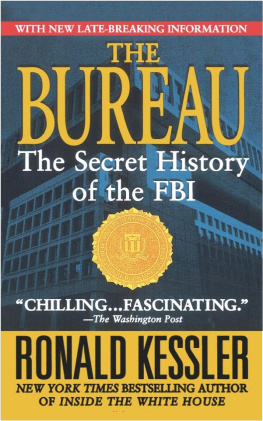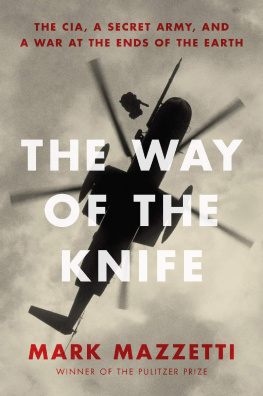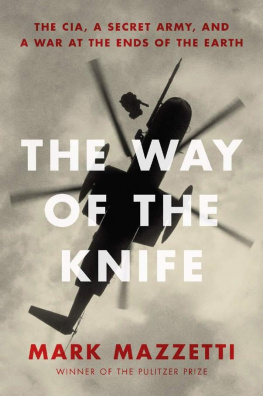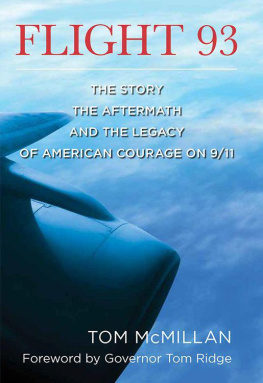by
William M. Arkin
Beginning in the spring of 2001, the CIA repeatedly warned the White House that Osama Bin Laden was planning terror attacks inside the USA. The Bush administration did nothing. The disaster that unfolded on 9/11from the first minute of the day through the lasthas now been meticulously recorded in Bill Arkins new book. If you want to understand what happened, this is the place to start.
Thomas Powers, author of Intelligence Wars: American Secret History from Hitler to Al-Qaeda
Copyright 2021 by William M. Arkin
Cover design by Pete Garceau
Cover copyright 2021 by Hachette Book Group, Inc.
Hachette Book Group supports the right to free expression and the value of copyright. The purpose of copyright is to encourage writers and artists to produce the creative works that enrich our culture.
The scanning, uploading, and distribution of this book without permission is a theft of the authors intellectual property. If you would like permission to use material from the book (other than for review purposes), please contact permissions@hbgusa.com. Thank you for your support of the authors rights.
PublicAffairs
Hachette Book Group
1290 Avenue of the Americas, New York, NY 10104
www.publicaffairsbooks.com
@Public_Affairs
First Edition: August 2021
Published by PublicAffairs, an imprint of Perseus Books, LLC, a subsidiary of Hachette Book Group, Inc. The PublicAffairs name and logo is a trademark of the Hachette Book Group.
The Hachette Speakers Bureau provides a wide range of authors for speaking events. To find out more, go to www.hachettespeakersbureau.com or call (866) 376-6591.
The publisher is not responsible for websites (or their content) that are not owned by the publisher.
Library of Congress Control Number: 2021938209
ISBNs: 978-1-5417-0106-9 (trade paperback original) 978-1-5417-0107-6 (e-book)
E3-20210702-JV-NF-ORI
To Rikki and Hannah
Today: Less humid. Sunshine. High 79.
Tuesday, September 11, 2001
When it comes to foreign policy, we have a tongue-tied administration. After almost eight months in office, neither President Bush nor Secretary of State Colin Powell has made any comprehensive statement on foreign policy. It is hard to think of another administration that has done so little to explain what it want [sic] to do in foreign policy.
Morton Abramowitz, So Quiet at the Top, op-ed appearing in the Washington Post the morning of September 11, 2001
3:05 p.m. (10 minutes): Small Group Meeting with Leaders of the Muslim Community in the Oval Office.
Schedule of the President, Tuesday, September 11, 2001
I count myself blessed that Ive never had to ask myself what I wanted to do for a living and that I have found workand a particular approach to my workthat fits an extremely patient and detail-oriented psyche. I served in US Army intelligence from 1974 to 1978 in West Berlin, responsible for keeping tabs on Soviet and East German military forces. And though I like to quip that I was once one of the worlds leading experts on two militaries that dont even exist anymore, it taught me how to understand large systems and gave me a methodology to tackle a world of unknowns. After leaving the Army, I continued that same kind of nuts-and-bolts approach in delving into the secrets of nuclear weapons, building up my expertise by minutely ferreting out the topography of over 700 locations where US warheads were stored, filling index cards and then notebooks and then computer disks with data, even visiting sites to take a look. The product was the best-selling Nuclear Battlefields, featured on the front page of almost every newspaper in the United States and around the world, subject of an ABC 20/20 segment, the dense and serious book even mentioned in a late-night Johnny Carson monologue. After that, I worked on and coauthored four volumes of the Nuclear Weapons Databook series, the essential Cold War reference sponsored by the Natural Resources Defense Council.
When it came to the superstructure of everything from warheads to bunkers, I was a go-to expert for the news media. Eventually I found myself as a consultant to numerous organizations and at NBC, where I developed stories and made news. I developed sources inside the military, read the documents no one else did, wrote lists and timelines, obsessed about the details. And then with the end of the Cold War, I shifted my attention to understanding conventional warfare and airpower, ending up as the first military expert allowed into Iraq by the government of Saddam Hussein after Desert Storm in 1991. There, I methodically catalogued what had been bombed and the impact, both militarily and on the civilian population. Based on that, I was invited to present my findings to various military and intelligence audiences and eventually became an adjunct professor at the US Air Forces School of Advanced Airpower Studies, consulting for the Air Force on the direct and reverberating effects of warfare on the civilian population. Human Rights Watch and then the United Nations hired me to conduct post-bombing assessments in Iraq, the former Yugoslavia, Lebanon, Afghanistan, and other places.
On the day of 9/11, NBC News sent a limousine to my home in Vermont to bring me to New York to provide expert analysis. I remember quipping at the time that what I knew about al Qaeda could probably fit into a thimble. But NBC said that was an ocean compared to what most knew. And I was the guy who uniquely understood the secret world, and that meant I could explain what was going on behind the scenes in Washington and then in Afghanistan (and eventually Iraq). I can vividly remember sitting with Tom Brokaw and various senior producers, schooling them on emergency procedures of government, on this weapon and that target, and then eventually coming full circle back to weapons of mass destruction when the Iraq debacle approached. Suffice it to say I knew the details, how the military thought, and how government and the secret agencies worked.
For the final four months of 2001, I worked 18-hour days and lived out of a suitcase in New York, reporting on the aftermath of the al Qaeda attacks and the broadening Afghanistan war. As the United States recovered from 9/11, it was clear that there was so much going on in obscure corners as the system transitioned to a permanent wartime posture. And because it was wartime and in that post-9/11 frenzy, the secrecy was intense, and information was hard to get to. Pentagon spokespeople urged us not to do this and that story, to not reveal Dick Cheneys secure location, to not talk about some new weapon, to not even mention organizations that were struggling with their own quick study. As a simultaneous consultant to the Air Force, I also felt the changea tightening of the reins on information, a closing of doors and of minds, a change in day-to-day routines as people and institutions responded to perceived vulnerabilities and were overwhelmed by the task ahead.
Ive applied my usual rigor and obsessiveness to try to make sense of the sequence of events that unfolded after 9/11, specifically the world of emergency procedures. Before 9/11, Id already become one of the worlds leading experts on the obscure subject of continuity of government. After the attacks, there was an eruption of new activity. I detected small clues of changes afoot, clues that I compiled into spreadsheets and timelines, tracking not just the seminal day but its effects. In Codenames, based on a ridiculous database I created, I wrote about the explosion of government secrecy and revealed thousands of programs. In Top Secret America, I researched the growth of post-9/11 organizations and the private companies that had just as much come to fight this new kind of war. In








